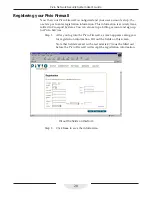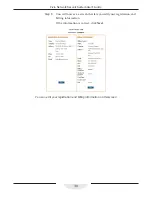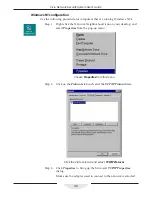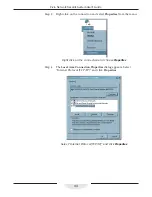
33
Static IP Configuration
Chapter 4
Static IP configuration
This chapter covers configuring the Pivio Firewall for a
Static IP address
. If you
know you have a static IP address, you should use this chapter. If you are not
sure, try the procedure in Chapter 3 first.
What is a “static IP address”?
Every computer that connects to the Internet must have an IP address. This is
the “address” of your computer. When you request information, the web page
uses your IP address when it sends the information.
A
static
IP address means that you always have the same address. Most DSL and
cable modems are always connected, and therefore use static IP addresses.
A
dynamic
IP address changes every time you connect to the Internet. When you
connect to the Internet through a dial-up connection, you usually get a dynamic
IP address.
How to determine if you have a static IP address
To determine if you have a static IP address, examine the information your
Internet Service Provider (ISP) provided. If the information includes a specific IP
address, then you have a static IP address.
If, however, the information indicates you have “DHCP” or “dynamic IP,” then
you have a dynamic IP address.
If you have a static IP address, the Pivio Firewall will use that address for itself.
It will then give every computer on your network a dynamic IP address.
Before you can configure the Pivio Firewall to use a static IP address, you have
to set each computer to use a dynamic IP address. Because the Pivio Firewall
“owns” the IP address, it will issue dynamic addresses to each computer on
your network.
Содержание Pivio
Страница 6: ...vi Table of Contents...
Страница 15: ...15 Getting Started...
Страница 19: ...19 Getting Started...
Страница 20: ...20 Pivio User s Guide...






























